Many preppers want to start living a life that will become self-sufficient. There is a dream of living off the land and off the grid. Most want to do it simply because it offers a simpler way of life that is not caught up in the consumer rat race in which most people in the Western hemisphere live.
But many of these people are also looking to prepare in advance for the collapse of society. Whatever your reasons for wanting to live off the land, perhaps the biggest challenge is getting started.
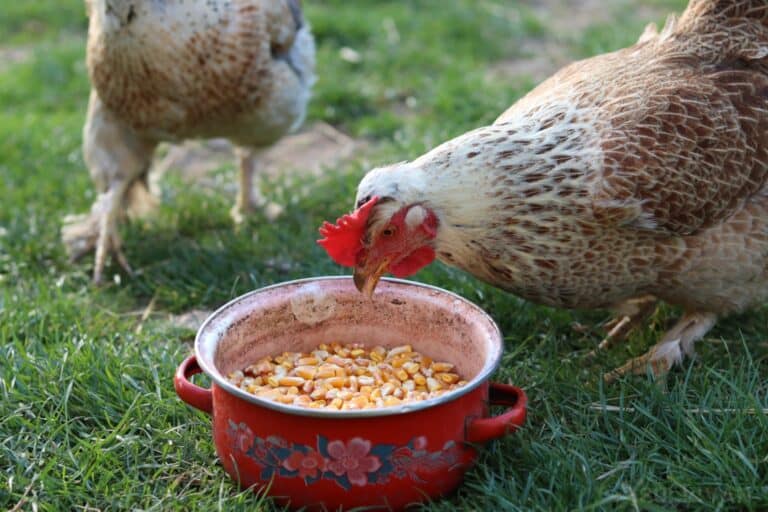
How to Start Living off the Land
Living off the land is going to be a whole new lifestyle for you and there are some things you’ll have to do to get started. You need to purchase the land you want to use and install water and electricity/power systems. You’ll also need to install a sewage/waste management system to keep things clean.
Additionally, you need to figure out how to heat and cool your home throughout the year. You should also learn as much about plants and animals as possible so you know what you can plant and/or raise in your area. Familiarizing yourself with any local laws (i.e. sanitation, hunting, etc.) is also a good idea.
There are many things to consider when getting started with living off the land. First and foremost, do you have the financial means to go off the grid?
You need the land, but you have to consider the type of shelter you will live in, how much land you need, how you will produce your food, where you’ll get your water from, where you’ll get your electricity, what kind of equipment (tools) you’ll need, the accessibility of the land, and waste management. You also need to consider health, safety, and security on your property
What follows is a breakdown of what you need to consider when getting started. This begins with choosing your land, at least for those of you who do not yet have a piece of property.
Breaking Down the Steps to Living Off the Grid
Before you build whatever type of dwelling you want to live in or put your shovel in the dirt or dig a well, before any of that, you need to find your land and buy it. There are a few things that you need to take care of before purchasing your land.
You Gotta Get the Land
Before you build whatever type of dwelling you want to live in or put your shovel in the dirt or dig a well, before any of that, you need to find your land and buy it. There are a few things that you need to take care of before purchasing your land.
Do your Research
Read, read, read, and then read some more! You can never have too much info on a topic. The more you know about off-the-grid living, the better.
Knowing about potential problems (i.e. predators, soil issues, etc.) will allow you to avoid these problems easier than if you didn’t know about them.
Get Your Finances Sorted
In order to get your land, you are going to need to get your finances in order, if they aren’t already. The first thing you need to do is get out of debt. It will be difficult to devote yourself to a self-sustainable lifestyle of living off the land if you are carrying debt.
It will also be difficult to purchase land if you are carrying debt. Ensuring your financial house is in order and saving money to purchase your land is critical to your success.
Decide on Acreage
You definitely don’t need a hundred acres of land to live comfortably, but you need at least five acres. You will need enough room for your house, your gardens, an orchard, and your animals.
You want to have enough space that you can fit it all in and if you also have a little extra land leftover, that is great. Perhaps you might have some natural forest or meadows or a creek or river running through your property.
Make Sure Your Location is Accessible
It is important to consider accessibility when choosing a location for your homestead. You don’t want to be right on the main thoroughfare, but you have to consider how difficult it might be to access your property in the winter if you are too far off the beaten track. Can you drive in?
Do you have to get in by snowmobile, skis, or snowshoes in the winter? Are you so remote that you can only access your property via ATV or plane, regardless of the time of year?
The more remote, the more secure you might be, but being remote comes with a price. There is probably a balance that you can strike that is right for you and your family.
Share your Experience
Many people who take to living off the land start blogs, or websites dedicated to sharing their adventures and mishaps. Sharing your experiences is educational for both you and your audience.
Your audience gets a glimpse of what goes into off-the-grid living and you can learn from other, more experienced homesteaders to improve on any weak points.
Install an Electricity/Power System
You will need to decide if you want to live on or off the grid. If you are on the grid, then you need to decide whether you want to have power lines running through your property or whether they should be buried. Be sure you truly do want to live on the grid for the long-term before you start the process.
There is a lot of money involved in getting the lines installed, and if you really want to live via solar or hydro-electric power, then it might be best to start there.
Look for and/or Install Water Supplies
When it comes to water, be sure you have two sources. Choose land that has a spring or creek that can supply you with water if needed.
The water can be disinfected for human consumption and can also be used as part of a hydro-power system to supplement the energy churned out by a wind turbine, solar panels, and conventional generators.
The second water source would be to dig a well that is equipped with a hand pump.
The cost of this will depend on your location, how far down the water table is, and the individual contractor.
Convert an Existing Well
An existing well can be converted rather easily from an electric pump to an off grid power system – but doing so can carry a rather hefty price tag and will be a drain on the off grid home’s available power, especially during cold weather months if only solar panels are used to provide energy to the home.
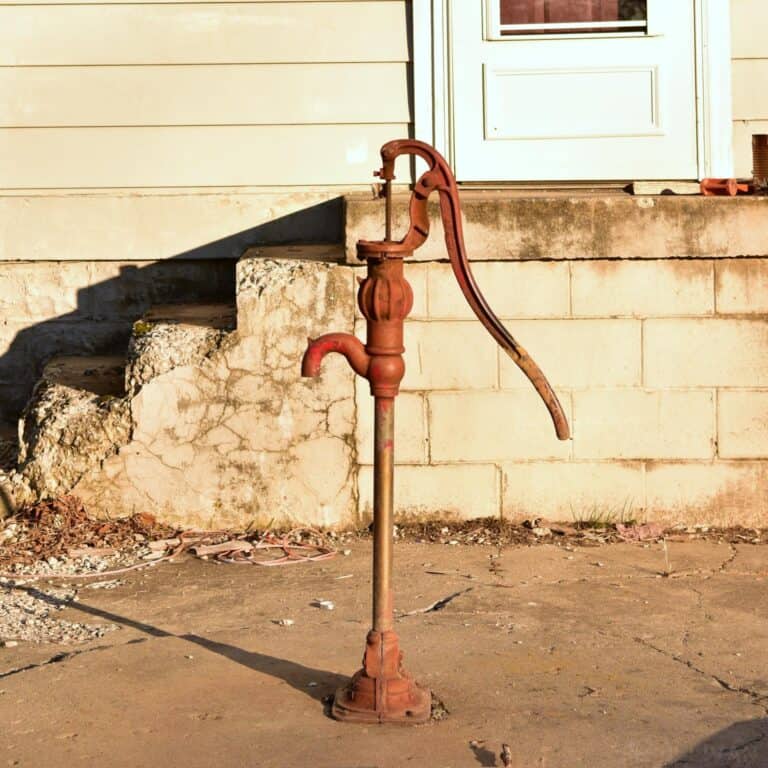
A pump, either powered by alternative energy and/or a manual pump, and a large collection tank, will be required to have a fully functional well year around on an off the grid retreat.
A drilled well already present on the property is a great starting point, but should not be relied upon exclusively to provide water for the off grid home. Wells run low, run dry, and can become contaminated.
Install a Rainwater Collection System
It’s also wise to consider installing a rain water collection system and a water storage system, such as a cistern or tank, so that you have accessible water in emergency situations, such as when the well runs dry.
Setting up a gray water system at the off grid home site will help you conserve valuable water, and redistribute it for use in gardening and for other non-human consumption purposes.
Learn Waste Management
When considering waste, do you want the expense and mess of putting in a septic tank or can you live with a composting toilet? As with your electricity needs, it is best to think about your ultimate goal and start there.
The composting toilet is the cheapest option. Once you purchase the toilet, you have no expenses at all. Or you can dig an outhouse for free and still compost your human waste.
You can also purchase an incinerator toilet for around $2,000, which will dispose of your waste quite efficiently. The septic system is the most expensive, costing between $4,000 and $10,000, plus the need for running water, electricity, and ongoing maintenance and repair.
Your Home
Once you have your land, you need to build a home on it. If you manage to find land with a house already on it, that’s great! It gives you something to work with.
If you need to build a home, you can consider whether to build a home from the materials on your land, to buy a prefabricated home, whether you want a small cabin or a larger house. What type of home you build will be a personal decision, but here are some things to consider.
Keep It Simple
When starting out, you do not need to build your dream home. If you are planning to live off the land, then you need to focus on your food and water needs first. Having said that, you do need a roof over your head, but it doesn’t need to be the home you ultimately will live in, at least not right away.
Live in a trailer or other temporary shelter or modest home on your property until you get your food and water needs taken care of. Once you have that under control, then you can turn to building the home you have always wanted.
Disclosure: This post has links to 3rd party websites, so I may get a commission if you buy through those links. Survival Sullivan is a participant in the Amazon Services LLC Associates Program. As an Amazon Associate, I earn from qualifying purchases. See my full disclosure for more.
Here are some resources to help get you started:
- Mini Farming: Self-Sufficiency on 1/4 Acre
- The Woodland Homestead
- Creating the Low-Budget Homestead
- How to Build the Perfect Off-Grid Home
Sell Anything you don’t need
One thing we all tend to do is store a lot of random things in and around our homes. This creates a lot of unnecessary clutter which can cause a lot of frustration when you’re trying to find something and it’s lost in a box somewhere. How do you avoid this?
Well, if you don’t need it, go to a local farmer’s market and sell it. You kill two birds with one stone; you get rid of clutter and make a bit of money in the process.
Buy Used Items
Buying second-hand/used items is a good way to get useful equipment without making your bank account cry and/or ruining your credit. Second-hand items can do as good a job as something shiny and new. Farmer’s markets are a good place to buy used items.
Learn to Barter
Bartering is an important skill to know. Trading with your neighbors is a great way to get anything you need.
Recycle Old Stuff
Like buying used items, recycling old stuff will save you a LOT of money. You’re taking something old and battered and giving it new life and purpose and meaning. you don’t have to go and spend a ridiculous sum on new stuff for no reason.
Make a List
A list of supplies needed or tasks to be done makes things a heck of a lot easier because you know what needs doing on the land and what tools and/or materials you’ll need. The same applies to groceries and other necessities. Having a list of what you need makes buying/bartering easier.
Build a Root Cellar
Since you are planning to live off the land, you will need to prepare for food storage. This means you will need a root cellar of some type.
You can build your root cellar anywhere on your property, but it is wise to consider building it as a “basement” to your house. This way, you will have easy access to the root cellar year-round and you will be able to build it with the rest of your house, saving you time and labor later on.
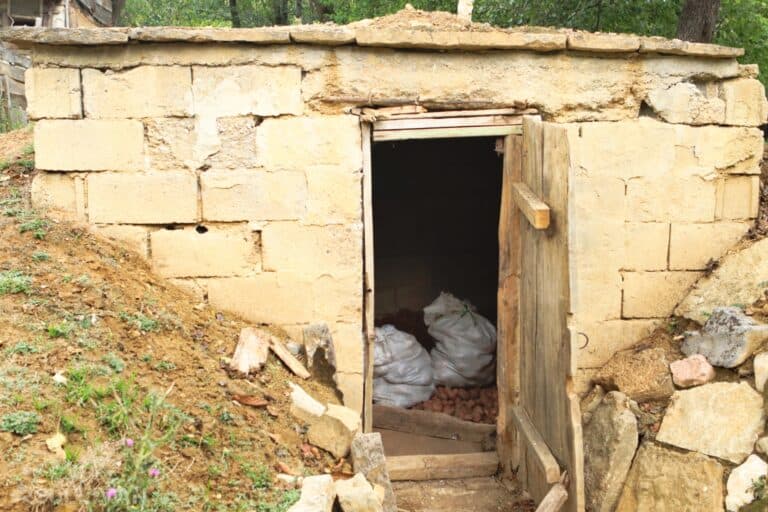
You can build the root cellar first, and if you have to, you can even live in it until you can build the rest of your home. You will also need to be prepared to defend your food stores against environmental factors, such as heat, light, temperature, humidity, and pests.
Think about Heating/Cooling your Home
If you live in the south, this might not be an issue, but if you live where winter descends upon the land for four to six months of the year, then you will need to think about how you will heat your home during those cold months.
If you have solar panels, you could use solar electric heat, but the ideal is a wood stove. Consider this when designing and building your home.
The opposite can also be a challenge. When you live in a hot climate, even if it is just for part of the year, you have to be able to keep your home cool, particularly if you are living off the grid and don’t have the convenience of air conditioning. Here are some things to consider when building to keep a home cool:
- Dig your basement/root cellar deeper. The best stability in terms of temperature is reached at 10 feet (3 meters) deep.
- Build with high ceilings.
- Use the right materials, such as clay, bricks, and stone.
- Orient the house so the part you want to be cooler later in the day (such as the bedroom) is facing east.
- Use wood or ceramic flooring as these materials repel heat.
- If using paint, use lighter colors.
Learn to Protect your Land
Finally, be sure you consider security on your homestead. You want to be sure you have good visibility, controlled access, and guns and ammunition that you are trained to use.
Protecting what you have worked so hard to build for you and your family only makes sense, but that protection should also extend to natural disasters.
Depending on where you are located, you might have to contend with wild fires, tornadoes, or flash floods. There are steps you can take to protect your home against these types of natural disasters and other threats to your home and here’s book that can help:
Learn First Aid
There is a good chance you will be living a good distance away from emergency services. For this reason, make sure you are trained in advanced First Aid and have an emergency medical kit that is designed to go beyond just treating booboos.
This kit should have everything you need to care for basic injuries and dental emergencies. Keep a good informational book on hand.
Growing Food
Whether you already have your own homestead or you are starting from scratch and whether you live in the city or out, you will need to produce your own food to live off the land. This requires gardens and animals. Let’s take a look at a few things that you need to consider when starting out.
Learn about Plants
If you don’t have experience growing your own food, then take the time to learn. It takes more than sticking a seed in the ground and watering it to grow food for survival. You have to know:
- That the plants have enough sunlight, nutrients, the right kind of soil, and drainage
- How to space the seeds, thin out the plants, harvest the food, and preserve it
- What pests and diseases might attack your plants and what you can do to stop them
- Your growing zone and which plants grow in it
- Which plants do well growing near each other and which don’t
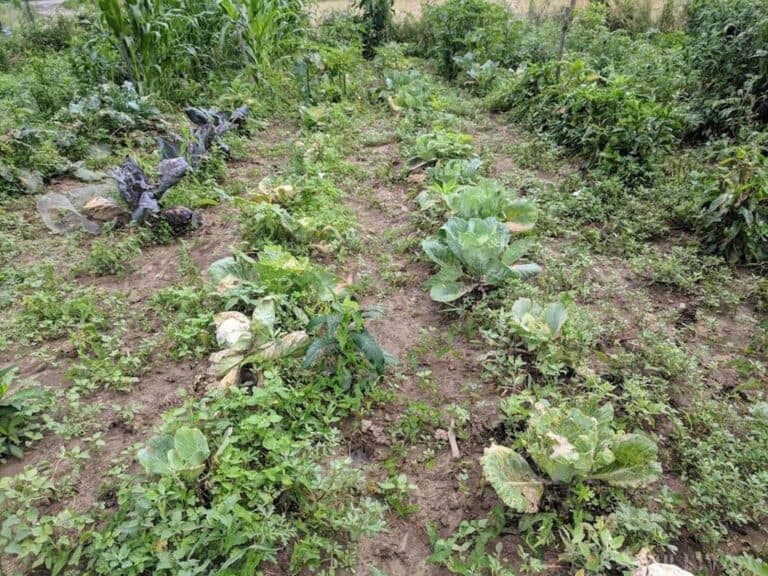
Plant Perennials
In the beginning, it is best to get your perennial food-bearing plants in the ground first. Sure, you can plant crops and grow a regular vegetable garden, but plant the following as early on as you can because it can take a few years before they begin to produce food in ample quantities:
- Berries (including strawberries and bush berries)
- Fruit trees
- Jerusalem artichokes
- Rhubarb
- Perennial herbs that are for culinary or medicinal purposes, such as oregano, sage, chives, and rosemary (culinary) and Echinacea, lemon balm, and feverfew (medicinal)
Really, any perennial food-bearing plant you want to plant should be put in the ground as soon as possible so you can start harvesting as soon as possible.
Plant What You Eat
There is no need to get fancy when it comes to planting food. Just make sure you have a good variety and that you plant what you eat. If your family isn’t big on eating Jerusalem artichoke, then don’t plant it.
If you don’t like sweet potatoes, then don’t plant them. Sure, you can experiment later on, if you have the space for it, but make sure you get your essentials in there first.
The key is to plant a vegetable garden that will truly feed your family. You can even go the route of setting up a permaculture environment, which will allow your garden to become a natural ecosystem in which your food and nature will thrive together. You can check out these great gardening books:
- Permaculture: Principles and Pathways beyond Sustainability
- Grow or Die: The Good Guide to Survival Gardening
- Going Galt: Survival Gardening: Sustainable High Yield Gardening
- The Vegetable Gardener’s Bible
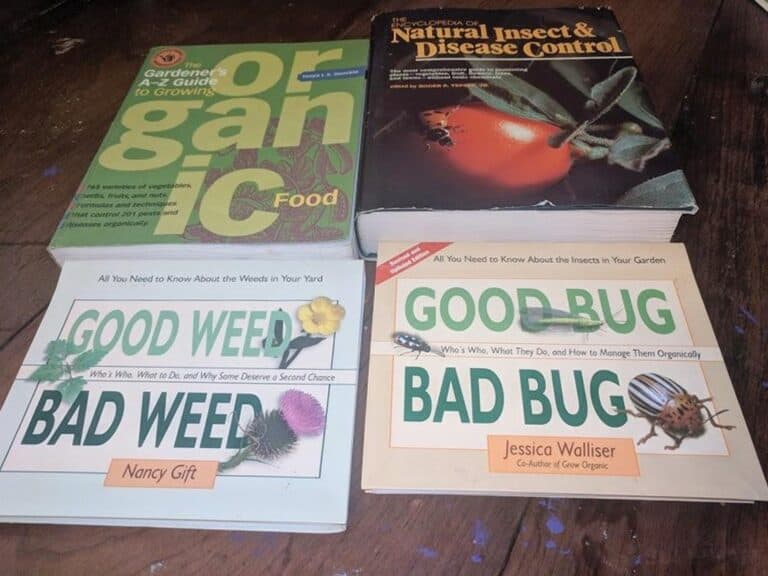
Start Keeping Bees
Beekeeping can be a very lucrative venture if done correctly. You can harvest the honey and sell whatever you don’t use.
Rent Parts of your Land
Renting portions of your land is a great way to supplement your income and ease some of the financial difficulties posed by living off the land.
Keep some Animals
Living off the land will require that you keep some animals, unless perhaps you are an exceptionally good hunter and have game nearby.
Like starting your garden, keeping animals is something you need to research before you do it. You need to decide on which animals, such as chickens, goats, sheep, and cows, would be the best to keep. You also need to know what each animal you choose needs in terms of:
- Space
- Shelter/habitat
- Food
- Winter and summer care
- Disease/illness prevention and care
- Escape prevention and protection from natural predators
Be sure to have all of this sorted out, have the animals’ shelter and habitat set up, and have all the required food, equipment, and medicine on hand before bringing your animals home. Appropriate fencing is a must when you have farm animals.
If you are keeping larger animals, such as cows, sheep, and pigs, then you will need a barn, and you will need a chicken coop for chickens. You will also need to be sure the animals are kept warm during the winter months and that you can get water to them at any time of the year.
Check out how to raise sheep as well as these great products:
- The Backyard Homestead Guide to Raising Farm Animals
- The Joy of Keeping Farm Animals
- Building a Chicken Coop
- The Complete Beginners Guide to Raising Small Animals
Learn your Local Laws
Even in my extremely rural area where no building codes or zoning laws exist, we still have to deal with the county health department when setting up a sewage system on either traditionally powered or off the grid home sites.
Make yourself keenly aware of the sewage and waste disposal laws where you live before sketching out any plans for an off grid sewage system.
In many rural areas, using a buried leach field or septic tanks is still legal. The use of open air lagoon pits is becoming increasingly against the law in many states.
Composting commodes are generally permissible, at least outside of metropolitan areas and homes located in neighborhoods with homeowners associations.
Proper disposal of human waste is essential, especially after the SHTF.
Wrap-Up
Most importantly, have fun researching, designing, and building your homestead. Living off the land will come with its stresses.
It will mean you are doing manual physical labor every day and there will always be something to do/fix, but it will also be incredibly rewarding. But even if you live in the city, you can still live off the land. If you have yard space, then start a garden.
If you live in an apartment, then get a community garden or find some land outside the city, perhaps rent it from a local farmer, and bring your produce home.
Regardless of how you choose to live off the land, stick with it and you will enjoy a wonderful source of food, water, and safety for many years to come.

An urban prepper and rural wannabe, Karen has been working as a freelance writer for a decade and prepping for about half that time. She has gathered a wealth of knowledge on preparing for SHTF, but there is always more to learn and she has a passion for gathering and sharing that knowledge with other like-minded folk. Karen lives in London, Canada with her two children and plethora of cats.
